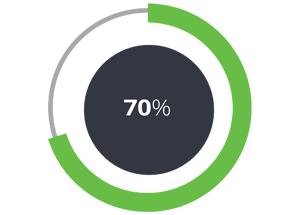Tax Transformation Trends: Technology in focus has been saved

Analysis
Tax Transformation Trends: Technology in focus

Tax transformation trends survey
Technology in focus
In this third report of the Tax Transformation Trends survey series, we tapped into the perspectives of 300+ tax and finance leaders globally and examined how technology has ushered in an entirely new age of transparency for the tax function.
Tax in a transparent world
The infusion of technology into every aspect of our lives has ushered in an entirely new age of transparency. When we order food, hail a ride, or buy groceries, we can track where things are at each step of the process. The world has become accustomed to and embraced this level of visibility. The tax function is no exception. The public and taxing authorities want to know who pays how much tax, when, and where. This has a growing and significant impact on companies’ reputations and brand perceptions.
Working in a completely transparent world can feel like being in a greenhouse. As the greenhouse analogy becomes a reality, tax leaders should explore how to use technology to get their houses in order with a focus on data quality, investments, and operating models.
In this study, 70% of tax leaders predict that revenue authorities will have more direct access to their systems within three years.

Key insight 1: Next-gen ERP – Data access for tax transparency
Our survey revealed, tax leaders are leveraging next-gen ERP projects as a gateway to teams with finance and to gain access to tax-sensitized data via revamped, standardized processes and integrated systems. It is essential for tax leaders to understand their data requirements and existing data quality challenges, and then make their voices heard—alongside other department leaders in their organization—in the decision-making process that informs the design of new ERP systems.
Of the quarter of those surveyed where a next-gen system is up and running, nearly eight in ten (78%) play a lead role in shaping the system’s design.
Confidence levels in the benefits of ERP upgrades are high, and particularly the first movers, who believe that their upgraded ERP system will enable them to enhance straight-through processing of data for tax processes, and to embed controls to solve existing data quality issues. There is also substantial confidence that such systems will help tax teams cope with evolving digital tax administration requirements.
Those companies already working in a modernized ERP system see benefits that stretch beyond compliance and reporting. For example, 60% of this group describe their ability to conduct sophisticated scenario modeling as “very strong” relating to the changes in OECD Pillars 1 and 2. This is almost three times as many as in companies that have not yet implemented a next-gen ERP.
[An upgraded ERP system] will allow us to do so much more in real time. And in combination with a data lake, we can play around with data much more than we could before.
– Gaby Bes, Head of Tax and Customs, ASML
Get in touch
We are here to help. Whether you'd like to arrange a meeting to discuss your organization's needs or you'd like us to respond to your RFP, feel free to contact us.
 |
Emily VanVleet |
 |
Andy Gwyther |
|
 |
Daniel Barlow |
 |
Christopher Roberge |
Recommendations
Operate with dynamic control
Connect people, process, and technology. Discover new approaches for your tax operating model.
Tax transformation trends survey
Talent reimagined


